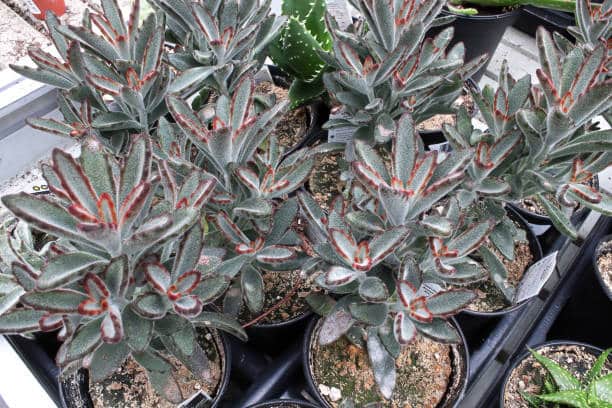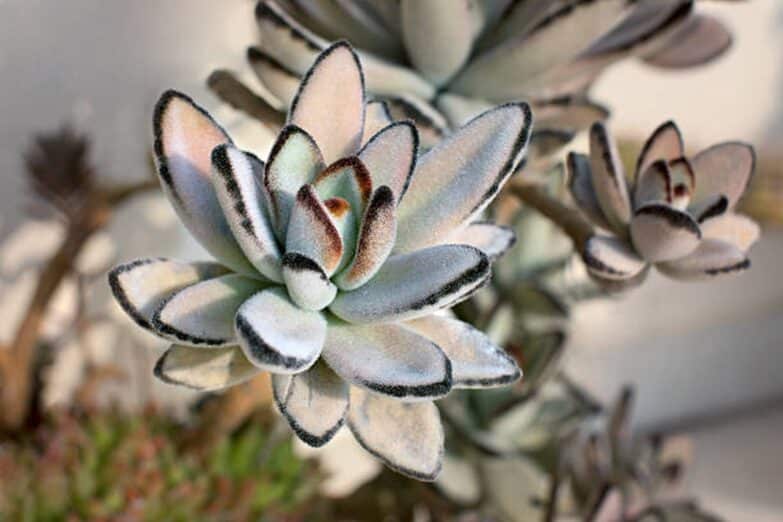Panda plants, also known as Kalanchoe tomentosa, are a popular succulent variety prized for their fuzzy, panda-like appearance. Originating from Madagascar, these charming plants add a touch of whimsy to any indoor or outdoor garden. This comprehensive guide will cover everything you need to know about growing and nurturing your own fuzzy forest of panda plants, from selecting the right potting mix to understanding their unique care requirements.
Getting Started with Panda Plants
Selecting the Perfect Plant
To start your panda plant collection, you’ll want to select a healthy, vibrant specimen. Look for plants with sturdy stems, plump leaves, and no signs of discoloration or damage. If possible, choose a plant with a few new growths, as this is a sign of a thriving, healthy plant.
Potting and Soil Requirements
Panda plants require well-draining soil to prevent root rot. A mix specifically designed for succulents is ideal, but you can also create your own mix by combining equal parts of potting soil, perlite, and coarse sand. When selecting a pot for your panda plant, choose one with drainage holes to allow excess water to escape. A terracotta or clay pot is preferable, as these materials are porous and help wick away moisture from the soil.
Providing the Right Environment
Light and Temperature Needs
Panda plants thrive in bright, indirect sunlight. A south or west-facing window is perfect for providing the right amount of light without causing sunburn to the leaves. If natural light is insufficient, you can supplement it with a grow light. Panda plants prefer temperatures between 60-75°F (15-24°C) and can be sensitive to extreme fluctuations. Keep them away from drafty windows or heating vents, and if you live in a colder climate, consider moving your plants indoors during the winter months.
Watering and Humidity
As a succulent, the panda plant is adapted to store water in its leaves and can tolerate periods of drought. However, it’s important not to let the plant become too dry. Water your panda plant when the top inch of soil feels dry to the touch, allowing the soil to dry out completely between waterings. Be careful not to overwater, as this can cause root rot. Panda plants prefer low humidity and may suffer in environments that are too damp. If your home is particularly humid, consider using a dehumidifier or placing your plant in a room with better airflow.
Nurturing Your Panda Plant
Fertilizing Your Furry Friend
Panda plants have modest nutritional needs and should be fertilized sparingly to avoid overfeeding. Use a balanced, water-soluble fertilizer diluted to half-strength, and apply it every 4-6 weeks during the growing season (spring and summer). Cease fertilization during the fall and winter months, as the plant enters a period of dormancy and requires fewer nutrients.
Pruning and Propagation
Regular pruning can help maintain the shape and size of your panda plant while encouraging bushier growth. Use clean, sharp scissors or pruning shears to remove any leggy or damaged stems. You can propagate your panda plant from stem or leaf cuttings, making it easy to expand your fuzzy forest. Allow the cuttings to dry for a few days before placing them in well-draining soil. Keep the soil slightly moist, and roots should begin to form within a few weeks.
Pest Prevention and Treatment
Common Pests and How to Identify Them
Panda plants can be susceptible to a variety of pests, including mealybugs, spider mites, and aphids. Mealybugs appear as small, white, cotton-like masses on the leaves and stems. Spider mites are tiny, spider-like creatures that spin fine webs on the plant, often causing leaf discoloration and damage. Aphids are small, pear-shaped insects that feed on plant sap, causing leaves to curl and stunt growth.
Pest Prevention and Treatment
To prevent pests, keep your panda plant’s environment clean and free of debris. Inspect your plant regularly for signs of infestation, and isolate any affected plants to prevent the spread of pests. You can treat mealybugs by dabbing them with a cotton swab dipped in rubbing alcohol, or use insecticidal soap to control spider mites and aphids. Neem oil is another effective treatment for a variety of pests and can be applied as a foliar spray or soil drench.
Troubleshooting Common Panda Plant Problems
Yellowing Leaves
If your panda plant’s leaves are turning yellow, it could be a sign of overwatering. Ensure that the soil is drying out completely between waterings and that your pot has proper drainage. If the problem persists, consider repotting your plant in fresh, well-draining soil.
Wilting or Drooping Leaves
Wilting or drooping leaves can be a sign of underwatering, particularly if the leaves feel thin and dry. Increase your watering frequency, making sure to water thoroughly and allow the soil to dry out between waterings. If the leaves are plump and full but still drooping, it may be a sign of insufficient light. Move your plant to a brighter location, ensuring it receives indirect sunlight.
Leggy Growth
If your panda plant is growing tall and leggy, it’s likely not receiving enough light. Move your plant to a location with more indirect sunlight, or consider supplementing with a grow light to encourage more compact, bushy growth.
Enjoying Your Panda Plant Forest
By providing the right care and environment, your panda plant will reward you with a beautiful display of soft, fuzzy leaves that add a touch of charm to any space. With their low-maintenance requirements and unique appearance, it’s no wonder that panda plants have become a favorite among succulent enthusiasts. As your fuzzy forest flourishes, you’ll discover the satisfaction and joy that comes from nurturing these delightful plants.
Expanding Your Panda Plant Collection

Discovering Varieties and Cultivars
While the classic Kalanchoe tomentosa is the most well-known panda plant, there are other varieties and cultivars to explore. Some popular options include:
- Kalanchoe tomentosa ‘Chocolate Soldier’: This cultivar features rich, chocolate-brown leaf margins and tips that contrast beautifully with the silvery-gray foliage.
- Kalanchoe tomentosa ‘Nigrum’: A rare variety with dark green leaves that have an almost black appearance, creating a stunning visual contrast to the more common panda plant.
- Kalanchoe tomentosa ‘Golden Girl’: This unique cultivar has golden-yellow leaves with dark brown tips, adding a touch of warmth to your fuzzy forest.
Showcasing Your Panda Plant Collection
As your panda plant collection grows, you may want to experiment with different ways to display your furry friends. Here are a few ideas to get you started:
- Create a multi-tiered succulent garden using a variety of pots and plant stands to showcase your panda plants at different heights.
- Combine your panda plants with other succulents and cacti in a large, shallow container to create a miniature desert landscape.
- Use hanging planters or wall-mounted pots to display your panda plants in unexpected places, adding visual interest and texture to your space.
Sharing the Panda Plant Love
Gifting Panda Plants
With their charming appearance and easy-care requirements, panda plants make wonderful gifts for friends and family. You can propagate new plants from your existing collection and share them with loved ones as a thoughtful, living gift. Consider pairing your panda plant with a decorative pot or a care guide for an extra personal touch.
Joining a Panda Plant Community
As you dive deeper into the world of panda plants, you may want to connect with other enthusiasts to share tips, trade plants, and celebrate your love for these fuzzy succulents. Look for local plant clubs, online forums, or social media groups dedicated to succulents and panda plants. By connecting with fellow gardeners, you’ll continue to learn and grow as a panda plant caretaker.
Conclusion
Panda plants are a delightful addition to any indoor or outdoor garden, bringing charm and personality to your space. By following this comprehensive guide on how to grow and nurture your own fuzzy forest, you’ll be well on your way to becoming a panda plant expert. Remember to be patient and attentive to your plant’s needs, and you’ll be rewarded with a thriving, adorable collection of furry foliage. Happy gardening!

